By Karla Fetrow
Responding to the Call
As a region, the Cook Inlet is an extremely diverse culture; both rural and urban, blue collar and professional; military and subsistence; with Alaskan Native villages, Asian communities, Russian monasteries and pioneer settlements dotting the water front. There is one thing this mixture of small towns, communities and the big city of Anchorage all have in common. The people love to fish.
Scratch the Andy Griffith image of walking down a country path, pole in hand, cheery music playing in the background. We’re talking about serious fishing. As soon as the last of the snow melts and the rivers are flowing ice free, the people who live on the Cook Inlet are sniffing the air. They are waiting for the salmon to run.
The first salmon migration usually begins near the end of May. Leading the parade which drives millions of salmon up the tributaries and rivers each year are the mighty kings. Averaging between thirty to fifty pounds, record kings have been known to tip the scales at over one hundred sixty pounds. Close behind them, darkening the water with their thick colors, is the tasty cohoe. The salmon runs continue all summer, with the last migrations squirming their way upstream, bright run from fresh water burns, in late August.
The Cook Inlet fisherman wants that first run, while the fish are still vigorous from their ocean swim and their scales are like quicksilver. The barbeques are brought out and the smokers are prepared. The fishing poles line up, with their fresh new strings and lures. The tide tables are studied and the weather station listened to religiously. The fish come when the conditions are exactly right. “They don’t like the heat,” says one veteran fisherman. “They wait for cloud cover.” Another says they don’t like choppy waters. They want the tide; the spectacular high tides and low 4.6 low tides. They want the water to carry them, sweep them into the rivers, then die away in massive retreat until the next tides comes. They stay by their radios or by a campsite and wait for that announcement the salmon are running or that first glorious cry, “fish on!”
Beginning at the most inland point of the Cook Inlet is the Athabaskan village of Eklutna. Eklutna is sandwiched between the Knik, Matanuska and Eklutna Rivers, all glacial rivers pouring their ice melt into the Cook Inlet. Although the salmon run through these rivers, the amount of glacier silt makes it difficult to catch anything unless you’re a very skilled fisherman. This doesn’t stop the area from swelling with visitors each year; some to fish, most to take advantage of the water falls, the challenging mountain climbing, and the large, glacier fed Eklutna Lake. The real fish fever affected move south.
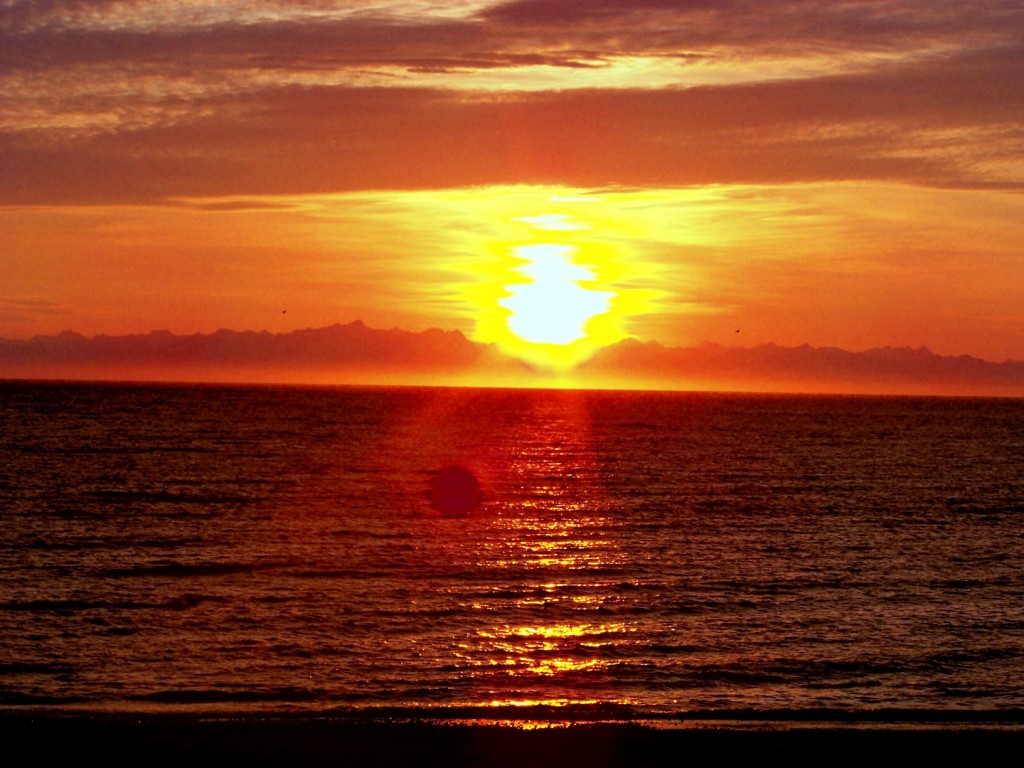
Consciousness of fishing addiction begins as soon as you drive outside Anchorage, onto the Turnagain Arm. If you leave Anchorage on the weekend, you’re immediately swept into the arms of the weekend warrior traffic. They have a single agenda. They leave Friday afternoon as soon as they finish punching the clock, with the intent of finding the best fishing hole and returning by Sunday night with a salmon or two in the cooler. Every other vehicle is a motor home or a camper. Every four vehicles contain a boat. It doesn’t matter if the boat is a handsome cabin affair or a fourteen foot skiff. Any boat is better than none when facing the battle zone.
The battle zones are amazing. The first big congestion is around Bird Creek, located forty miles south of Anchorage. Here, the dahl sheep climb down from the mountains and gaze at the collection of tourists, travelers and fish hungry locals from the high rocks. Here, the humpback whale often sound, the sea otters swim idly by, and here the hooligan come in, thick as locusts. The hooligan is a small fish, salty and oily. Hundreds of people line up on the banks of the Inlet each year with their nets to snag the hooligan run. The campgrounds become so congested, that cars line up on both banks of the highway. As impatient as you might be to catch the big fish, you must crawl through the roadside picnic of harvesters crossing the road on their way back to their vehicles, their campsite or their fishing spot.
The rage bubbles up just under the mask of politeness demonstrated for the sake of the harvesters. As soon as the last barrier of banked cars is cleared, the engines rev up like track stars bursting past their last hurdle. The flight to reach the mountain pass that descends into the lush country of the Kenai Peninsula is on.
The journey through the pass is worthy of its own sight seeing adventures. Within the grassy knolls between mountain summits, are crystal clear lakes, sparkling waterfalls and vigorous creeks. These waterways contain trout, greyling and dolly varden, but the campgrounds for this particular fishing delight are generally pretty modestly attended. Only one thing satisfies Cook Inlet fish fever; Cook Inlet salmon.
Coming down from the mountains, the first sight to greet you is magnificent Kenai Lake and the broad, flowing Kenai and Russian River’s. This area is a major stopping off point for a bustling tourism industry centered around fishing, but it doesn’t satisfy the fish fever of the locals. The smell of salt is in the air now and the only way to feed the cravings is to find a spot along the ocean. The final destination is Homer.
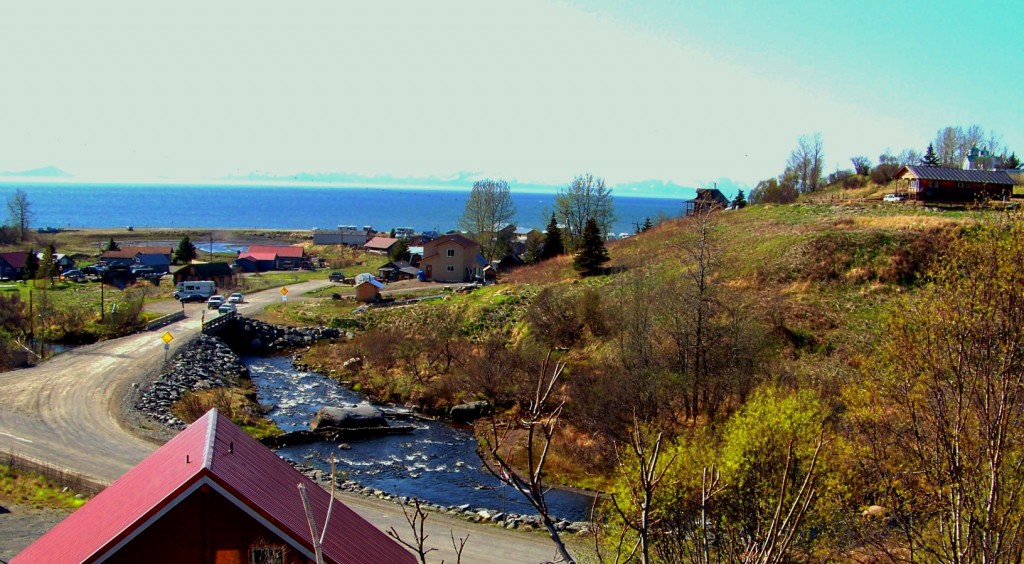
Rolling out of the mountains onto the long, flat stretch of the Sterling Highway, the first instinct is to let her loose after so many curves and climbing hills. Don’t do it. The Sterling Highway is the biggest speed trap in the entire State of Alaska. If they don’t catch you on the main road, they’ll find you on one of the off-roads, where they cleverly abstain from placing miles per hour posts in clear locations coming into your campground area of choice, but have them perched every two miles on the way out. The best thing to do is never go even one mile over the speed limit on the Sterling Highway and never drive more than thirty-five miles an hour on the back roads, no matter how deserted they might look.
This added income is necessary for the upkeep of the city of Soldoltna. Soldoltna is as nasally congested as it sounds. Before the pipeline era, which changed everything Alaskan, it was a trailer park, gas station offshoot of the modest town of Kenai. It was also close to a number of lakes and only a few miles from the ocean front. The highway was expanded, cutting Kenai out of the loop, and plopping a number of businesses and hotels in the middle of Soldoltna. Today, you see nothing of its origins. It’s a clear cut, modern town that looks more like the tail end of Los Angeles than it does a pioneer settlement. Its greatest commodity is a number of non-competitive gas stations, a MacDonald’s, and a Safeway. If you want to relax in an All American City, then the place to go is Soldoltna. If you’re looking for the great fishing adventure, keep driving.
The Zen of Fishing
The journey from the river basin flowing into the Cook Inlet to the final inland town of Soldoltna covers around two hundred miles. This is a significant enough distance to cool the heels of the rent-a-motor-home tourist or the weekend warriors, who have allotted their fishing pleasure to a timed schedule. The lakes and rivers are filled with fish, and a pair of waders and a bit of skill with a rod and reel is all it takes to get one. You might catch a dolly varden. You might catch a fat trout. You might also catch a wonderful, thirty pound king salmon. The campgrounds are crowded, however, throughout the summer, and you usually have to make a reservation to secure a spot. If you have a rugged vehicle and plenty of time and ambition, you’ll want to look for a beach front.
Beach front access is only for the serious camper. Reaching an ideal fishing spot by the mouth of a river usually means some pretty rugged driving over a very narrow stretch of semi-solid land just beyond the high tide water mark. Often, the only commodity is a row of outdoor toilets a good mile and a half from your chosen site. You must bring in all your own comforts, from your fire making abilities to your sleep arrangements. Is it worth it?
Your chances of catching a fish from the mouth of a river are as good as catching one on the Peninsula, but there is a major difference. Across the inlet is the ring of fire and the spectacular volcanoes; Spur, Iliamna and Redoubt. They glow on a sunset that settles briefly on the horizon, never turning quite dark, then mysteriously lightens again as the sun rounds the corner of the range. There is a timelessness in this exhibition; a blurring of time. Two days stretch into three and you lose count, aware only of the ocean’s ebb and flow. The low tide rolls back, obscuring the volcanoes in fog, and the vast mud flats stretch out, revealing what had been underneath the ocean depths. Little dimples appear in the wet sand, a sign that it’s time to get out your clam shovels.
When God made the world, He built the Cook Inlet last. His crowning achievement was Homer. He used all the dreams and tools He had at his disposal to craft the most magnificent view ever known to man. If you’re not aware of this as you abandon the last vestiges of American life in Soldoltna, you are by the time you reach Ninilchik, just forty miles up the road.
Ninilchik was first settled as a Russian community. Old town still has its church, its small, clustered village and its Russian population, but new town has a bright, modern school, wonderful coffee shops and a variety of small tourist oriented businesses. From the highway, you can see the church, sitting on a high cliff, part of the settlement scattered in the gully, the ocean glittering in the sunlight and the proud upheavals of Iliamna and Redoubt. For the rest of the journey, you are acutely conscious that you are traveling by the sea. It flirts with you. It hides behind languid, rolling hills, popping into sight now and then, each time surprising you with its increasing beauty, then disappears once more.
Should You Find Homer
Fifteen miles from Homer, you make a choice. You could stay at the Anchor Point, with a trembling view so rare, you can; when the conditions are exactly right, see five of the active volcanoes within the ring of fire; Spur, Redoubt, Iliamna, Douglas and Augustine. It’s an excellent place to set up a base camp. Its services include friendly convenience stores and bait shops, fresh water access, a news stand and even trawlers to pull out the trucks that got stuck in the bootlegger clay during high tide. It’s sheltered from the continuous winds that blow into the bay, and has more interesting scores for beach combers. Or; you could go to Homer and hang out on the spit.
The Homer spit is the longest natural land-locked spit in the world. Beginning just before the small town, the spit is four and a half miles long and no more than fifty yards across at its narrowest point. It is the fishing hole of all fishing holes. People fish from the banks. They fish from the spillways. They take out boats and fish. They ramble over the docks and study the offers on the boardwalk, looking for a charter.
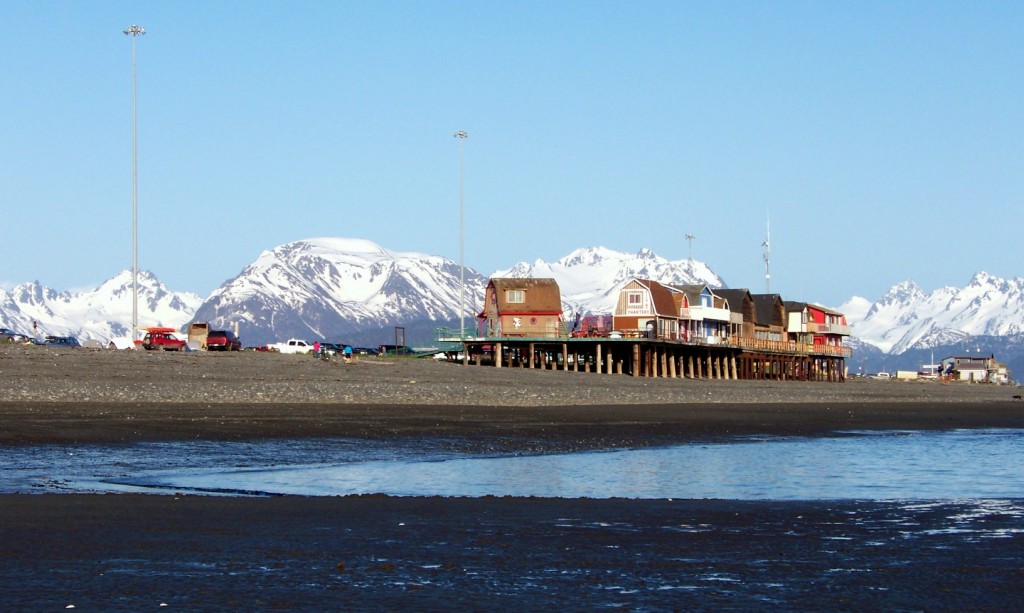
The boardwalk has a life of its own. Not only are there offices for charter boat fishing, there are restaurants, ice cream shops, taverns, bakeries with delicious coffee and gift shops offering everything from local handcrafts to fine Alaskan art. On the weekends, in the evening, live music floats out of the taverns and onto the beach.
Camping on the spit is comparable to camping in a parking lot. Motor homes, campers, tents, park side by side, each with its tiny picnic area and fire pit. The spit never sleeps. Long after the shops close, the bands go home, and the little ones nestle into bed, the adamant fisherman is still out there fishing. In the morning, the cleaning tables are full of freshly caught fish, and the seagulls and eagles crowd around for their share of the bounty.
If you choose the Homer Spit, you’ve chosen the party. Homer doesn’t know the meaning of the word, “stranger”. You pick a camping spot, and pretty soon half the neighborhood has dropped by to visit. These visitations often come bearing gifts; some extra wood for your campfire, some new fishing lures, a chunk of fresh halibut, even job offers to work on the docks.
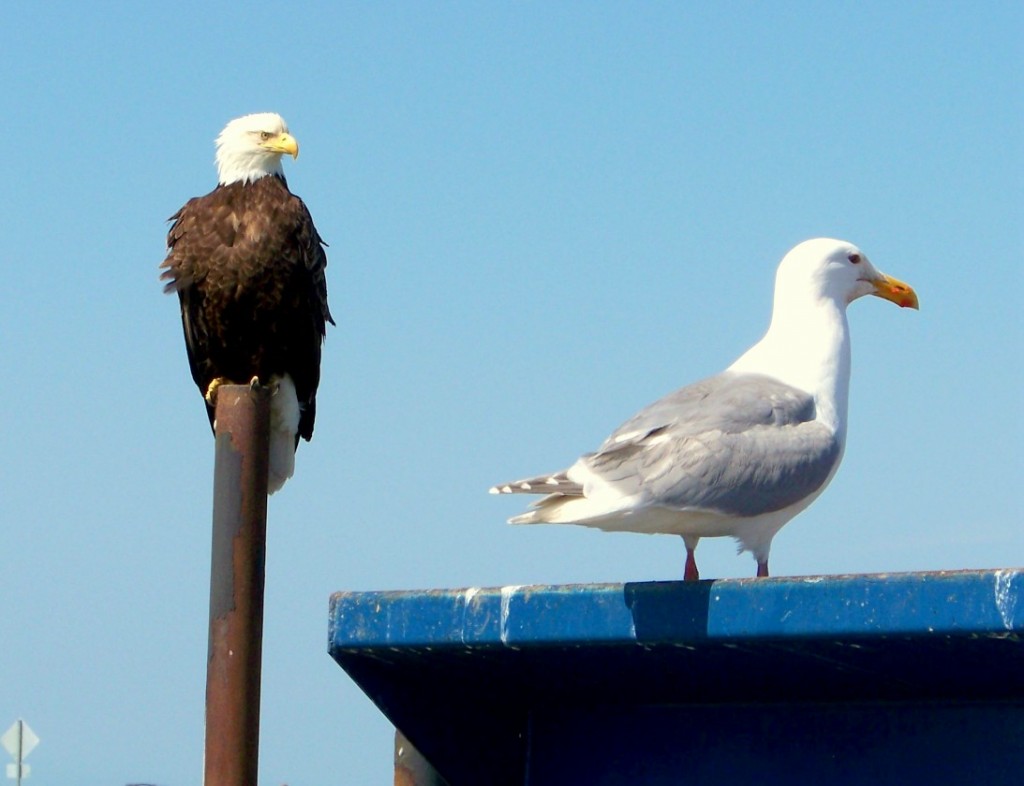
Whether you’ve chosen your spot at the mighty head waters where the salmon first migrate in, at the base of the rivers, or further inland, whether you’ve chosen comparable solitude or the party, nothing is quite as exciting as that moment when one of the fishermen patiently lining the banks, calls, “fish on!” The migration has started. One after another, the lines pull taut with a cascade of water and a fish leaping high into the air. The grills fire up. The skinning knives come out and the coolers rattle with ice. When it’s all over, you realize, it wasn’t just the act of catching a fish, but the whole experience of living close to nature, becoming aware of her tides and her moods, drinking in her beauty, living harmoniously next to others that filled your trip, and you begin to understand just a little bit why Cook Inlet inhabitants unfailingly develop fish fever.

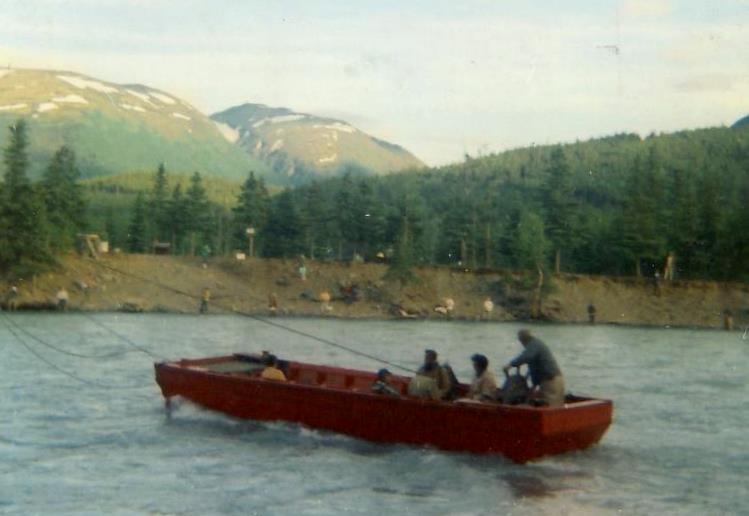
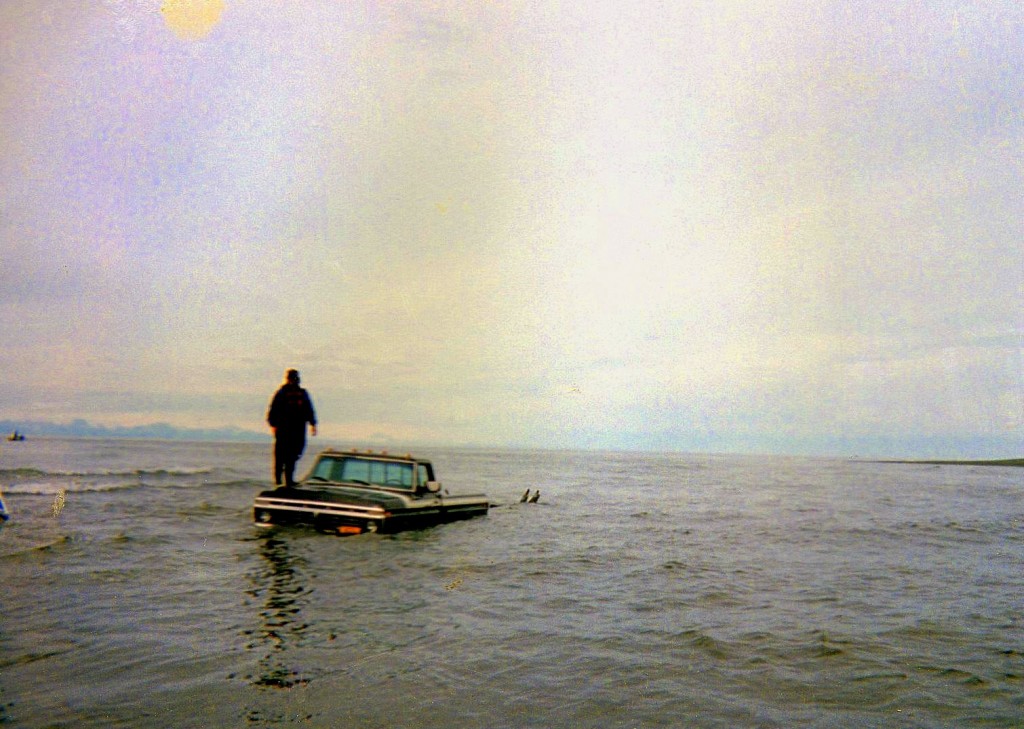
While I don’t approve of fishing, I do love your description of these wonderful places. This is a sure thing for our upcoming Subversify Travel sister site. Stay tuned.
Mitch, i tried to be as sensitive as possible toward our fish loving readers, but it’s difficult to gloss over something that is a distinct part of your cultural/regional heritage, and continues to influence your summer habits. I can understand feeling disturbed about bringing up a halibut or sea bass that did nothing but swim around in the ocean without the least bit of mind as to what was on top, but there is something inevitable about the salmon. He goes up the rivers to spawn and dying. When we catch them, they have already committed themselves to their death throes.
As perhaps the most essential subsistence food we have, the salmon are carefully maintained. A careful watch is kept on the number of salmon that successfully make it to the spawning grounds. If the numbers are too low, the salmon season is immediately shut down. We have fish hatcheries that protect and nurture newly developing salmon to insure that vigorous numbers return to the sea.
Not only is salmon a vital food source for us, the seagulls, the eagles, the bears and occasionally wolves feast on salmon as well. We can smell the migrating salmon in the air. As instinctual as bears, wolves and eagles, we line up on the beaches and river fronts, determined to get our share of the harvest before its eventual decay in the spawning grounds.
Well… that brought back a lot of buried memories, lost my heart three times in Homer – each time a different girl. Oh well… I was never much of a fisherman, but I did fish – I remember the salmon run at Peter’s Creek. Thanks for the read.